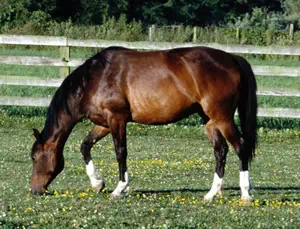|
 NEW YORK NEW YORK
Carcass Disposal State Regulations
General
Depending on circumstances, large animal carcass disposal may be regulated by a state's solid waste, medical waste, agriculture, or emergency management regulations. If your state does not provide specific guidance or regulations relating to large animal carcass disposal, check with your local health department, or city/county laws and ordinances.
In addition, during emergency situations and disasters (e.g., blizzards, floods, hurricanes, mass die-offs, etc.), consult with your local emergency officials, your state emergency planning agency, or the state veterinarian, to determine approved methods of carcass disposal.
Applicable Agencies and Regulations for New York
New York State Department of Environmental Conservation, Solid Waste Management
Address: 825 Broadway, Albany, NY 12233-0001
Contact Information: http://www.dec.ny.gov/chemical/292.html
Rules and Regulations: Solid Waste Management Regulations, 6 NYCRR Part 360. Describes permit requirements, exemptions and variances for solid waste management facilities: 360-1.7 (b) says disposal of carcasses and parts generated from a farm on that farm are exempt from permitting. Revision of this rule is in process to include a subpart for animal and contaminated food supply waste management facilities (see below).
Rules and Regulations: Comprehensive Revisions and Enhancements to Title 6 NYCRR Part 360 Regulations. The Department is revising the current Part 360 regulations to include technical amendments and clarifications, as well as updated language due to legal and policy developments.
More Information
Waste Disposal (New York State Department of Agriculture and Markets, Soil and Water Conservation District and Agricultural Environmental Management, 2005). Describes how dead animals are disposed with potential concern from lowest to highest. Disposal options addressed:
- Rendering: Lowest concern: must be picked up within 48 hours after death.
- Burial: Buried 6 ft deep in appropriate soils and more than 200 ft from a waterbody, watercourse, well or spring (next choice after rendering or composting).
- Composting: Lowest concern: properly composted on the farm.
Natural Rendering: Composting Livestock Mortality and Butcher Waste (New York State Department of Agriculture and Markets, Soil and Water Conservation District and Agricultural Environmental Management, 2005). Fact sheet, video and posters that describe the process, cautions, problems, biosecurity issues, economics and more of composting livestock mortalities
Avian Influenza and Poultry Composting (New York State Department of Agriculture and Markets, Soil and Water Conservation District and Agricultural Environmental Management, 2005). CWMI, in contract with the New York State Department of Environmental Conservation, assisted in the development and dissemination of educational materials for a composting component of a state emergency response plan for avian influenza. These materials can be used for routine mortality as well.
The Cornell Waste Management Institute (CWMI) maintains a database of carcass disposal state regulations promulgated by state environmental, agricultural and other agencies. There may be additional information on this site, not found on VetCA, that can be helpful to veterinarians, ranchers and farmers. Click here to access the CWMI information for New York.

Choose another state
|

